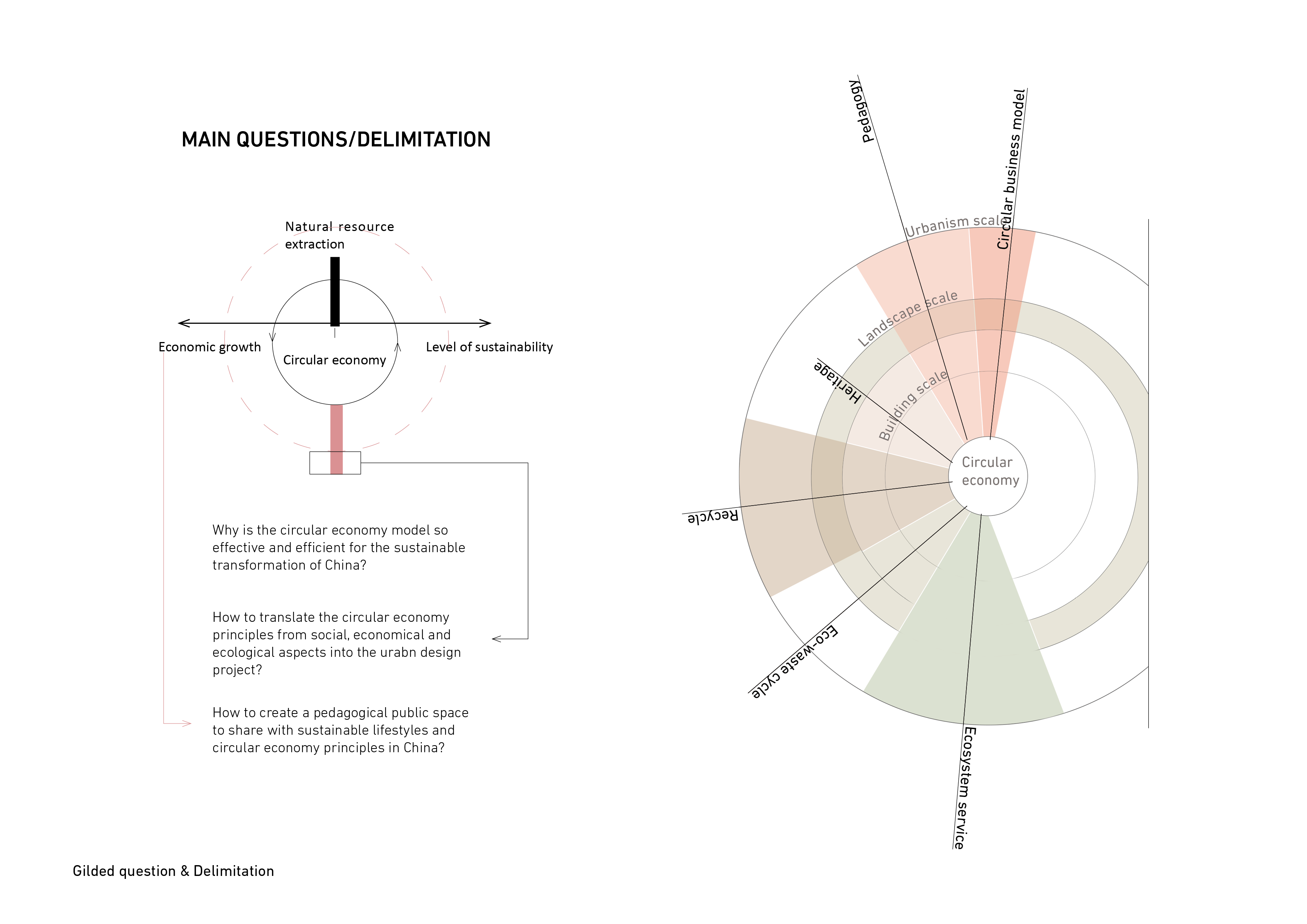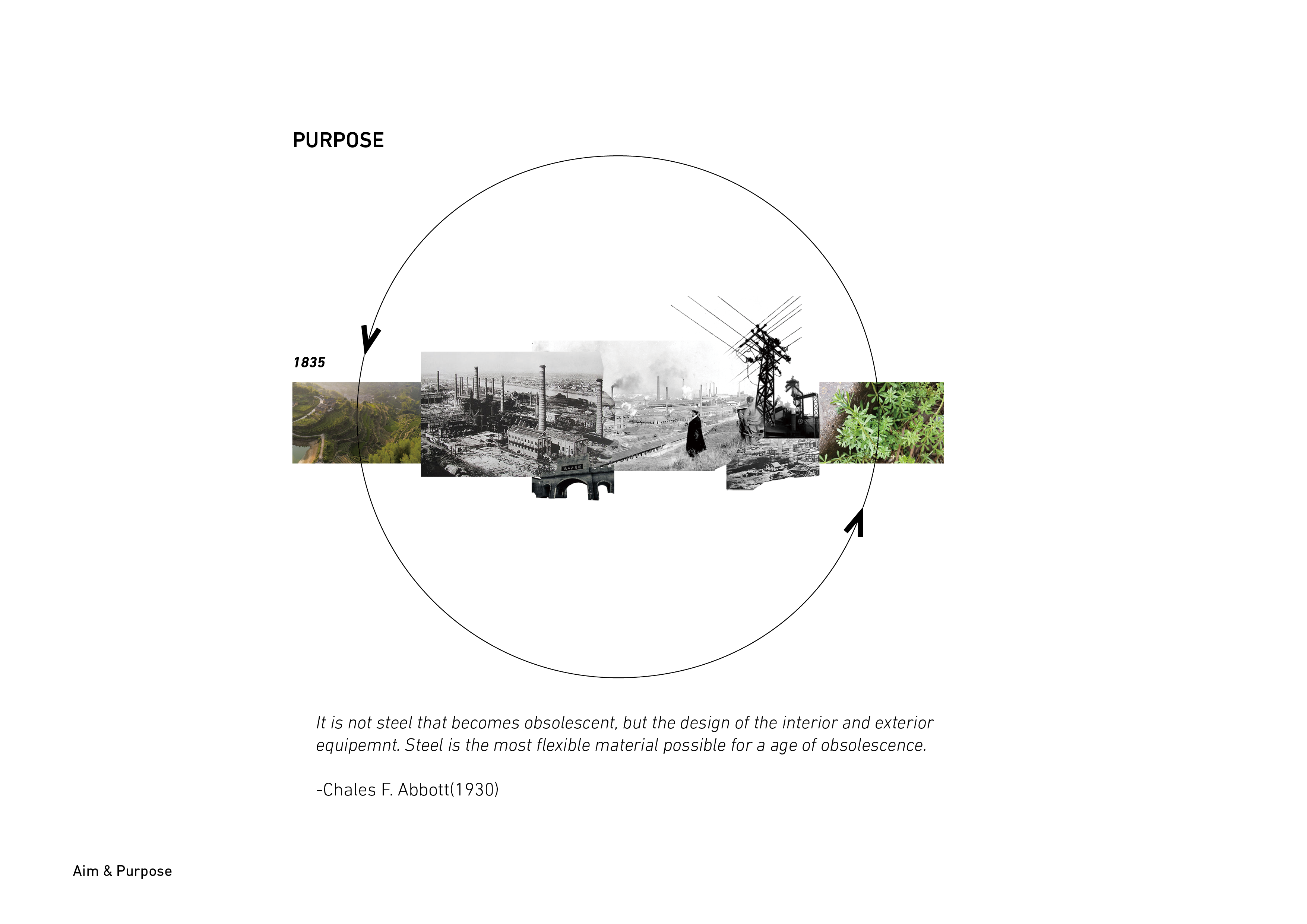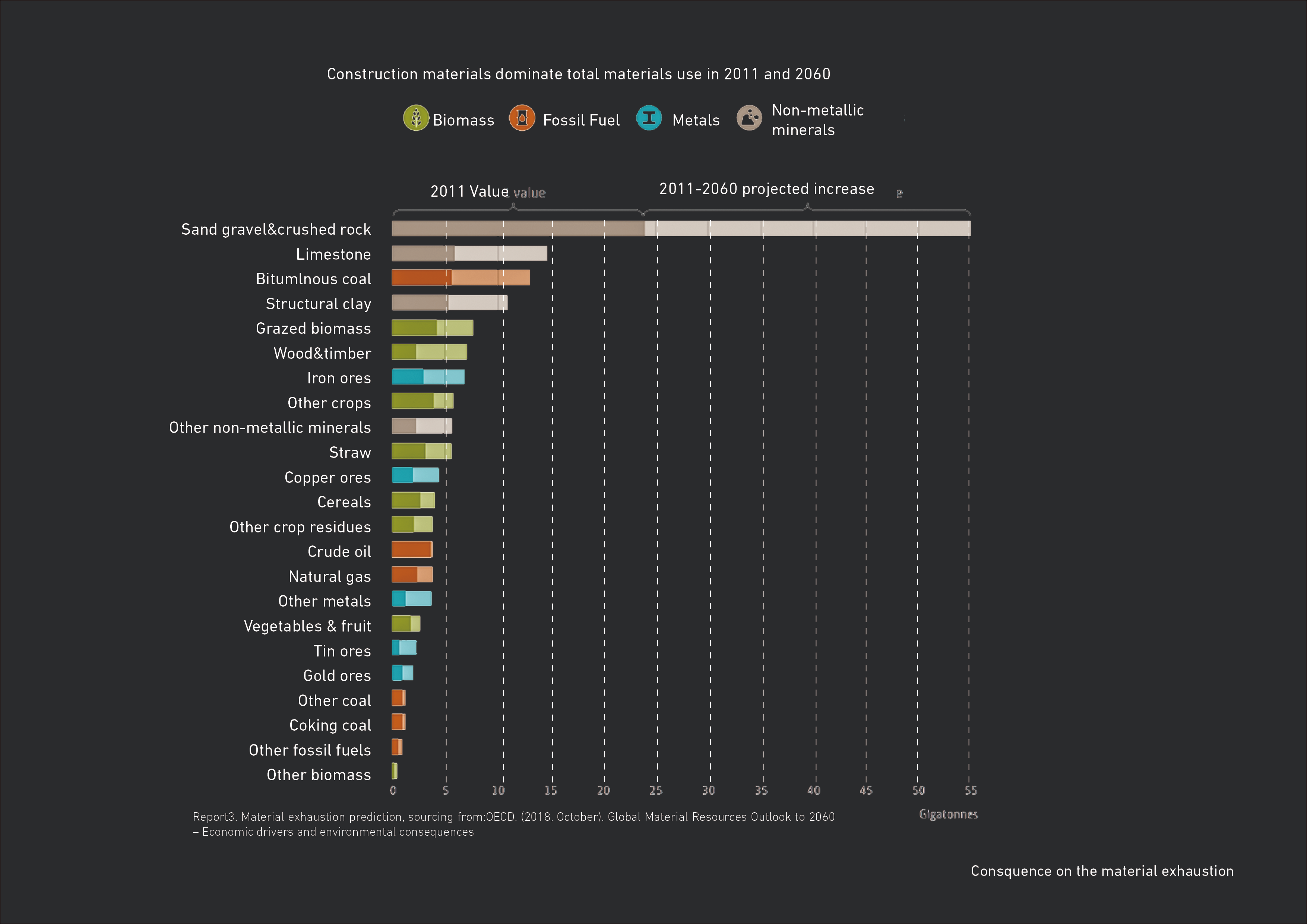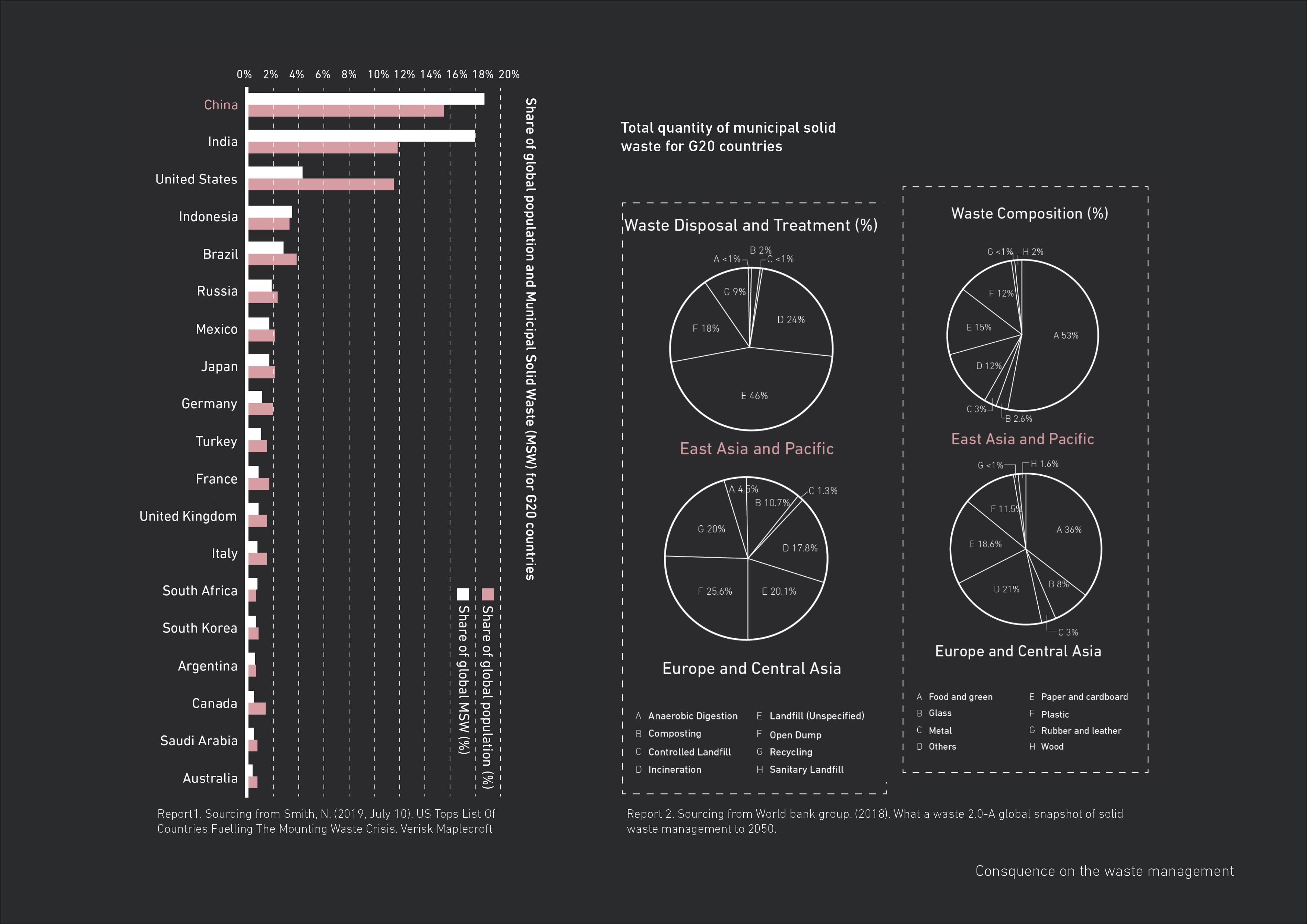Data and report
Challenge & Purpose
My main purpose to create the ‘Renewal Monument’ is to arise discussion over the circular economy, and how this economical concept could be interpreted into several layers of strategies that could be directly applied to the building stock renovation and architectural mining projects. In the thesis, I have selected Hanyang Iron Works in Wuhan as the design testbed since I have done thoroughly site mapping and analysis on the site three years ago and found its potential to be transformed as a new recycling public space with pedagogical value. China has been developing fast in the industry and manufacturing, though there is high demand for better waste management and sustainable lifestyle trigger, to visualize the footprint of carbon in dweller’s daily living. The design will be like a circular thinking experiment to test the methodology called Layer grouping and sketches as a manifestation tool.
Waste management & Material exhaustion
In the past few decades, China has been mostly focused on economic growth as the benchmark for success. The stark contrast to such monumental progress is the waste produced alongside the development. As shown in the infographics, China and India are among the top municipal solid waste producer globally, as well as being the only ones that create more share of waste than the population percentage-wise globally. This indicates a grave issue that could trace back to the mono-focused growth economic development strategy. In such a mindset, environmental maintenance that takes care of long-term human welfare is more often or not in direct conflict with short-term economic growth, and the lack of such consideration has already lead to significant consequences as of late.
China’s carbon neutral by 2060 policy
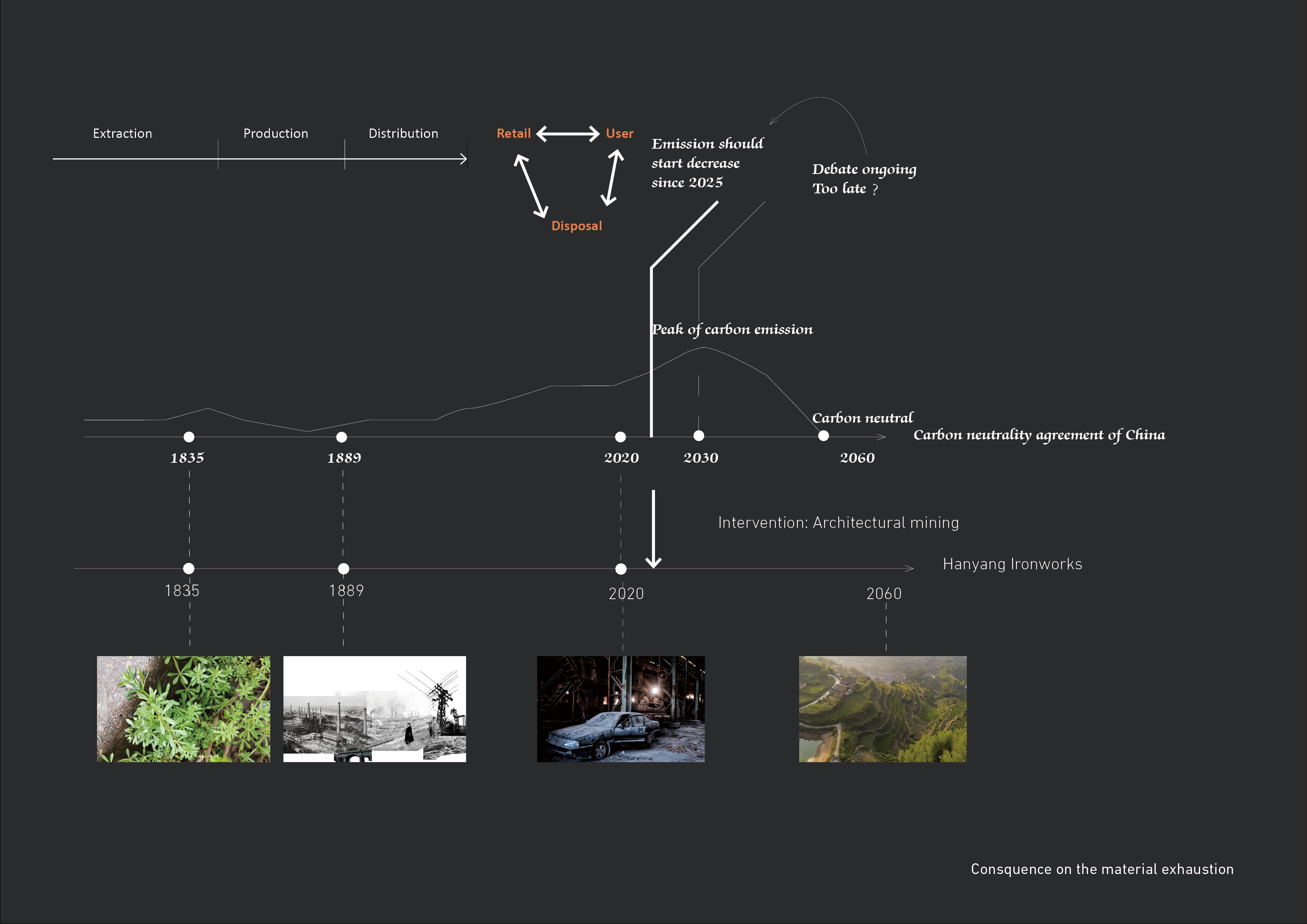
A circular economy highlights the process after consumption and focusing on the circulation composed of retail, user, and disposal. In 2020, China has taken a significant step in the direction of sustainable growth by addressing the UN general assembly. The monumental statement is that China will be aiming to halt the increase of carbon emissions before 2030 and achieve carbon neutrality by 2060. However, some debate holds the opinion that it may be too late considering the mass carbon emission beyond the high-speed linear economy growth and stimulus. We as architects, also part of the urban management and designer, need to rethink the pedagogical and profound impact currently public space could bring to the cognitive level of the consumers, and how to shape the city to prepare for the circular future.
